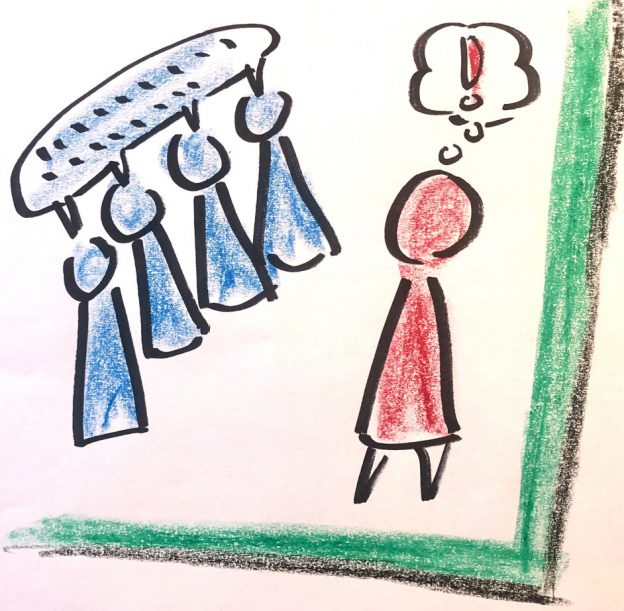
Tips for organising feedback in groups
There are many arguments for giving feedback in seminars and longer training courses not only to trainers but also to the other learners. Of course, such rounds are often time- and energy-consuming. Therefore, here are tips on how to organise these feedbacks in groups.
Dividing up observation points
In presentation training, the feedback givers are handed cards before a presentation on which a special observation point is written: language, body language, red thread, activation, use of media, beginning, end etc. They give feedback only on this specific point. Before the next presentation, the cards are exchanged. It has proved useful to include a joker card.
Flash round
If the whole group is relatively small (less than 12), feedback can also be given in the form of a flash round, where everyone gets a chance to speak. It is important that the first people in the group are very brief. The trainer can use impulses such as „Please only one observation at a time and no repetitions!“
„Keep/change“ as the starting point for a flash round also ensures brevity if everyone sticks to making only one observation at a time.
Interested in a full day on feedback?
There is a seminar day on this in the Refak programme 2024
May 7, 2024: Feedback. Tools, strategies and tips for the speaker’s daily work.
Feedback partnership
In flash presentations (120 seconds), where everyone performs, peer feedback can be organised with partnerships. „You will give feedback to each other after the whole round, not in plenary, but to each other, in pairs. Find a partner before we start.“
If it doesn’t work out, a partnership can also consist of three people. I have had good experiences of combining feedback with a walk.
Reflecting Team
The feedback taker sits behind a pin board and can hear but not see the group talking about their performance. This method (borrowed from peer counselling) sounds strange, but it is surprisingly effective. The person taking feedback can then say which suggestion from the Reflecting Team was particularly helpful.
One Minute Paper
After the presentation, everyone writes a short, quite personal feedback letter (with signature). The participant receiving feedback can choose three people to read their letters aloud. All are handed over. Advantage: You can read through the feedback letters in peace and quiet with time to spare. The tool is called „One Minute Paper“, but five minutes should be allowed for writing.
Divided feedback
Presentations are often prepared by small groups. One or more group members then give these presentations. How can a feedback marathon be avoided? Feedback is always given by one of this small group to another, not by all. In terms of organisation, it has proved successful that groups do not give feedback to each other alternately. So group 3 for group 1, group 1 for group 2, etc.
Author: Ulli Lipp
Translation: Astrid Donaubauer

Dieses Werk ist lizenziert unter einer Creative Commons Namensnennung-NichtKommerziell-Weitergabe unter gleichen Bedingungen unter gleichen Bedingungen 3.0 Österreich Lizenz.
Volltext der Lizenz

